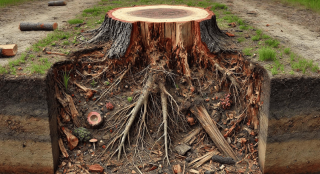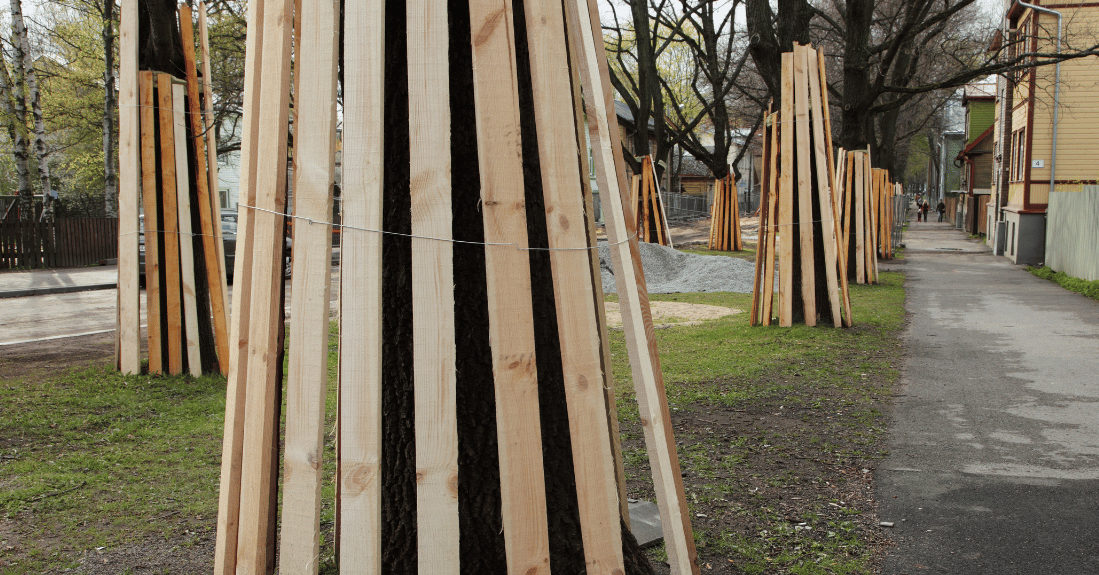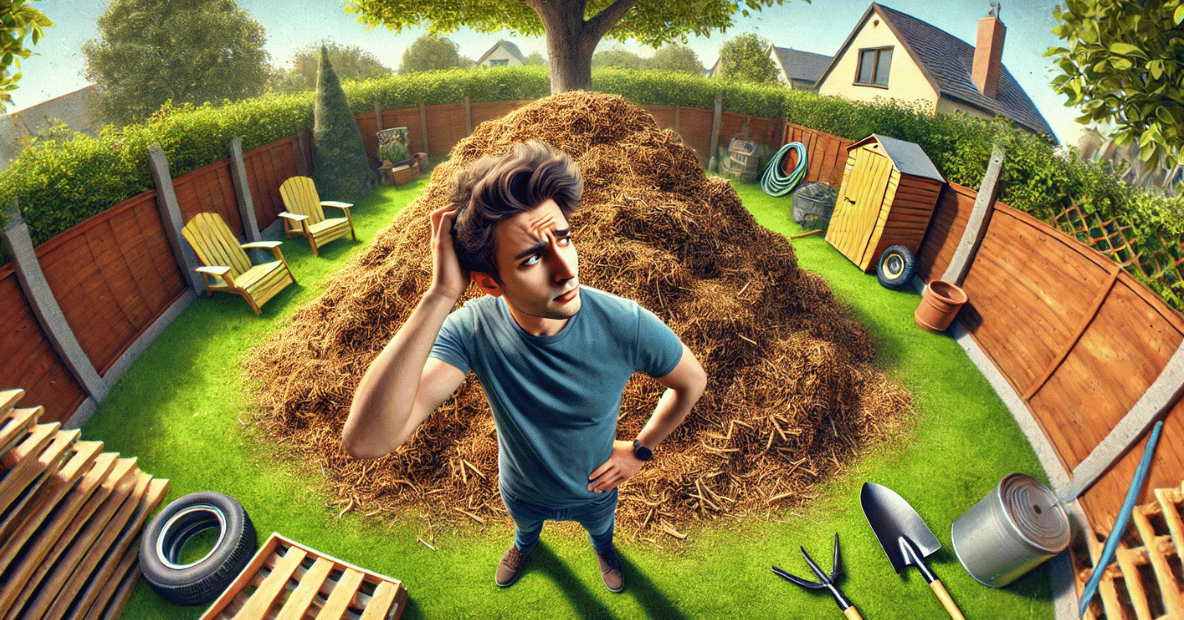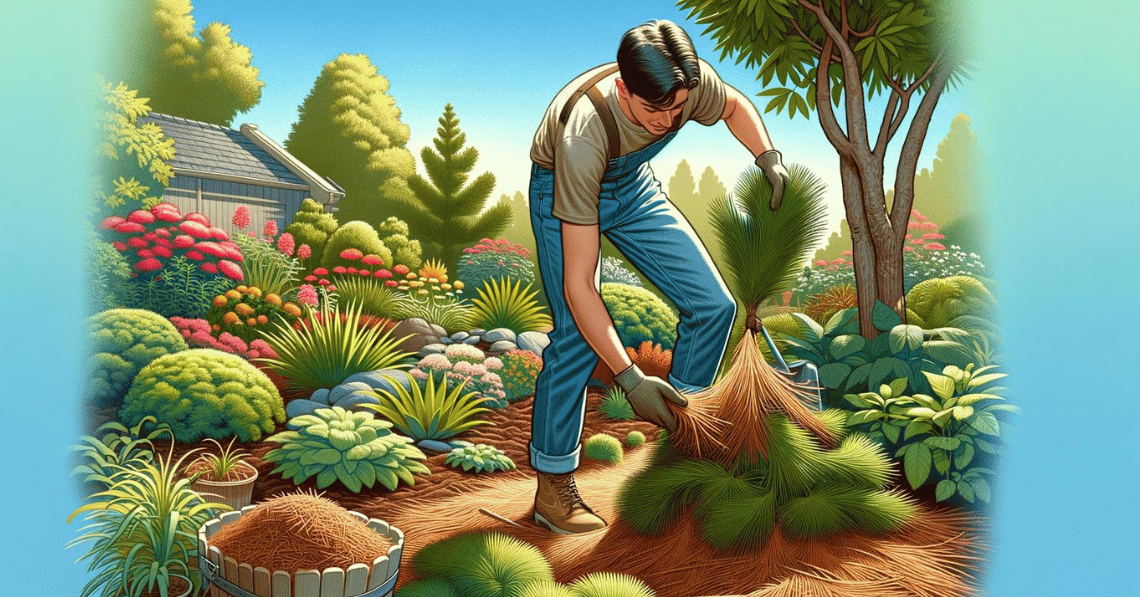After a tree is removed, the stump that remains can be an unsightly problem for homeowners and businesses alike. It can be a tripping hazard, an obstacle to landscaping, or simply detract from the appearance of your yard. That’s why many people opt for stump grinding to eliminate the above-ground part of the tree. But what happens to the roots once the stump is ground down?
The Process of Stump Grinding
When you choose to grind a stump, specialized machinery is used to break down the stump into small wood chips or sawdust. This process focuses only on the stump, which is the visible part of the tree left behind after the tree itself has been cut down. Typically, stump grinding machines can grind stumps to a depth of 6 to 12 inches below ground level, which is enough to ensure that the area can be replanted or covered with grass or other landscaping elements.
However, stump grinding doesn’t affect the roots that have spread out underground. Depending on the size of the tree, these roots can extend anywhere from 4 to 12 feet or even farther from where the stump stood.
What Happens to the Roots After Stump Grinding?
The tree roots are left behind after stump grinding. While stump grinding effectively removes the visible portion of the tree, the underground root system remains intact. Many homeowners wonder if these roots will continue to grow or cause problems after the stump has been ground down.
The good news is that after a tree is cut down and its stump is ground, the roots no longer continue to grow. Trees rely on their leaves for photosynthesis—the process that turns sunlight into energy. Without the tree and its leaves, the roots cannot gain the nutrients they need to continue growing. Therefore, the roots will begin to break down and decompose naturally over time.
The Decomposition Process of Tree Roots
Although the tree roots stop growing once the stump is ground, they don’t disappear immediately. The decomposition process of tree roots is a gradual one. Depending on the type of tree and the size of its root system, it can take several years—sometimes even 10 years or more—for the roots to completely break down.
During this time, the roots will naturally decay, aided by soil organisms such as bacteria, fungi, and insects that help break down organic matter. This decomposition process enriches the soil with nutrients, which can be beneficial for the overall health of your yard. However, in some cases, the decaying roots can create voids underground as they break down, potentially leading to minor soil settling or sinking in certain areas.
Factors Affecting Root Decomposition Time
The time it takes for roots to break down after stump grinding depends on a few things:
- Tree Type: Hardwoods like oak and maple have tougher roots that take longer to decompose, while softer woods like pine break down faster.
- Climate: Warm and wet weather speeds up decomposition, while cooler and dry conditions slow it down.
- Soil: Rich, loose soil helps roots break down faster, but compacted, poor soil slows the process.
- Root Size: Bigger roots take more time to decompose than smaller ones.
To speed things up, you can use a root-decomposing product or improve the soil with water and air.
Potential Problems and Concerns After Stump Grinding
Although the roots will naturally decay over time, there are a few potential issues you should be aware of when dealing with roots left behind after stump grinding.
- Suckering: In some cases, especially with certain tree species, the roots may attempt to sprout new shoots even after the stump has been ground down. These shoots, also known as suckers, won’t turn into new trees but can be a nuisance. Regularly cutting or mowing down these shoots will eventually stop them from appearing as the roots die off completely.
- Pests: Decaying wood can sometimes attract pests such as termites, ants, or beetles. While this is not a problem in every case, it’s something to watch for, especially if the tree was removed due to disease or infestation. If pests do become an issue, addressing the problem early will prevent it from spreading to other trees or structures on your property.
- Soil Settling: As the roots decompose and leave voids underground, the soil in those areas can settle or sink. This is a natural occurrence and is usually minimal, but it may require you to add more soil or reseed the area if it becomes uneven.
Is It Better to Grind a Stump or Remove It?
When dealing with a tree stump, you have two primary options: stump grinding or stump removal. Each option has its advantages and disadvantages, and the best choice depends on your specific needs.
Stump Grinding
This method is faster and less invasive than stump removal. It leaves the surrounding landscape relatively undisturbed and only requires filling the hole left behind with soil or mulch. The remaining roots will naturally decompose over time, which is a low-maintenance process. However, if you plan to replant in the same spot, grinding may not be the best choice because the roots may interfere with new plantings.
Stump Removal
This method involves digging out the entire stump and root system, which can be more labor-intensive and costly. Stump removal is a better option if you want to replant in the exact location or if the tree had an extensive root system that could cause future problems. However, the process of removing the roots can cause more disruption to your yard and may leave a larger hole that needs to be filled.
Why Choose Strobert Tree Services for Stump Grinding?
Strobert Tree Services specializes in expert stump grinding and tree care in Delaware, Pennsylvania, and New Jersey. Our experienced team ensures that the stump is ground effectively and safely, leaving you with a clean, flat surface ready for your next landscaping project. We can also advise on the best course of action for dealing with the remaining roots and any concerns you might have.
Whether you need routine pruning, stump grinding, or complete tree removal, Strobert Tree Services is here to help. Contact us today for a consultation, and let our experts take care of all your tree maintenance needs.
Conclusion
Stump grinding is an effective way to remove the visible remains of a tree, but it’s important to understand that the roots will remain underground and slowly decompose over time. This natural process can take several years, during which you may notice minor settling in your yard or even new shoots appearing. By staying informed about what happens after stump grinding, you can manage your landscape more effectively and ensure that your property remains healthy and attractive.











